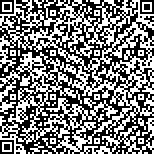| 本文已被:浏览 1027次 下载 432次 |

码上扫一扫! |
| 综合品种抗性和杀菌剂对6个抗性不同的冬小麦品种赤霉病防效评价 |
|
向礼波1,薛敏峰1,史文琦1,严双义2,曾凡松1,刘美玲1,杨立军1,龚双军1,喻大昭1
|
|
|
| (1.湖北省农业科学院植保土肥研究所/农业农村部华中作物有害生物综合治理重点实验室/农作物重大病虫草害防控湖北省重点实验室, 武汉 430064;2.湖北省随州市曾都区农业技术推广中心, 湖北 随州 441300) |
|
| 摘要: |
| 为明确品种抗性、杀菌剂施药时期和防治次数相结合对小麦赤霉病(Fusarium head blight,FHB)病情指数(Disease index,DI)、脱氧雪腐镰刀菌烯醇(Deoxynivalenol,DON)毒素含量和千粒重(Thousand-grain weight,TGW)的影响,2016—2018年连续2个年度使用6个不同抗性水平的冬小麦品种(‘郑麦9023’‘鄂麦006’‘鄂麦170’‘襄麦35’‘鄂麦DH16’‘宁麦13’),分别在扬花初期和扬花初期第6天喷施430 g/L戊唑醇防治小麦赤霉病,对病情指数、脱氧雪腐镰刀菌烯醇毒素含量和千粒重进行评价。结果表明:品种抗性和杀菌剂对DI、DON毒素含量和TGW的影响极显著(P<0.000 1);品种×杀菌剂联合作用,对TGW影响不显著(P>0.05);杀菌剂防治1次和2次对中抗品种的DI和DON毒素含量差异不显著;比较品种间DI和DON的防效,中抗品种对DI和DON毒素积累的防治效果要显著高于中感病品种(P<0.05)。因此,品种抗性与药剂相结合是防治小麦赤霉病和DON毒素积累的有效策略。 |
| 关键词: 小麦赤霉病 品种抗性 杀菌剂施用 脱氧雪腐镰刀菌烯醇 |
| DOI:10.11841/j.issn.1007-4333.2022.07.04 |
| 投稿时间:2021-07-25 |
| 基金项目:国家重点研发计划项目(2018YFD0200500);财政部和农业农村部:国家现代农业产业技术体系资助(CARS-03);国家自然科学基金项目(31872009);湖北省农业科技创新中心项目(2016-620-000-001-015);湖北省农科院领军人才计划项目(L2018013) |
|
| Evaluation of the control effect of six winter wheat cultivars with different resistance on Fusarium head blight by integrating cultivar resistance and fungicide |
|
XIANG Libo1,XUE Minfeng1,SHI Wenqi1,YAN Shuangyi2,ZENG Fansong1,LIU Meiling1,YANG Lijun1,GONG Shuangjun1*,YU Dazhao1
|
| (1.Key Laboratory of Integrated Pest Management on Crop in Central China of Ministry of Agriculture and Rural Affairs/Hubei Province KeyLaboratory for Control of Crop Diseases, Pest and Weeds, Institute of Plant Protection and Soil Science, Hubei Academy of Agricultural Sciences, Wuhan 430064, China;2.Zengdu Agriculture Technology Extension Center, Suizhou 441300, China) |
| Abstract: |
| In order to determine the effects of winter wheat cultivar resistance, the timing and times to apply fungicide on Fusarium head blight disease index(DI), thousand-grain weight(TGW)and the mycotoxin deoxynivalenol(DON), field experiments were conducted in Suizhou, Hubei Province from 2016 to 2018. This study integrated six different of cultivar resistance(Zhengmai 9023, Emai 006, Emai 170, Xiangmai 35, Emai DH 16 and Ningmai 13)and the application of the fungicide 430 g/L tebuconazole at anthesis and six days after anthesis were evaluated for their efficacy against FHB disease index, deoxynivalenol(DON)toxin content and TGW. The results showed: The effect of cultivar on FHB index was highly significant(P<0. 000 1), while cultivar×fungicide interaction had no significant difference(P>0. 05)for TGW in the two-year field trials. Index and DON had no significant difference in moderately resistant cultivars treated with the fungicide 430 g/L tebuconazole at anthesis or six days after anthesis. The results from this study indicated that fungicide efficacy in reducing FHB and DON was greater in moderately resistant cultivars than moderately insusceptible ones(P<0. 05). Taken together, these findings demonstrated the benefits of combining genetic resistance with tebuconazole treatment to manage FHB, tebuconazole was applied at early anthesis or 6 days after early anthesis, respectively. |
| Key words: Fusarium head blight cultivar resistance fungicide application DON |